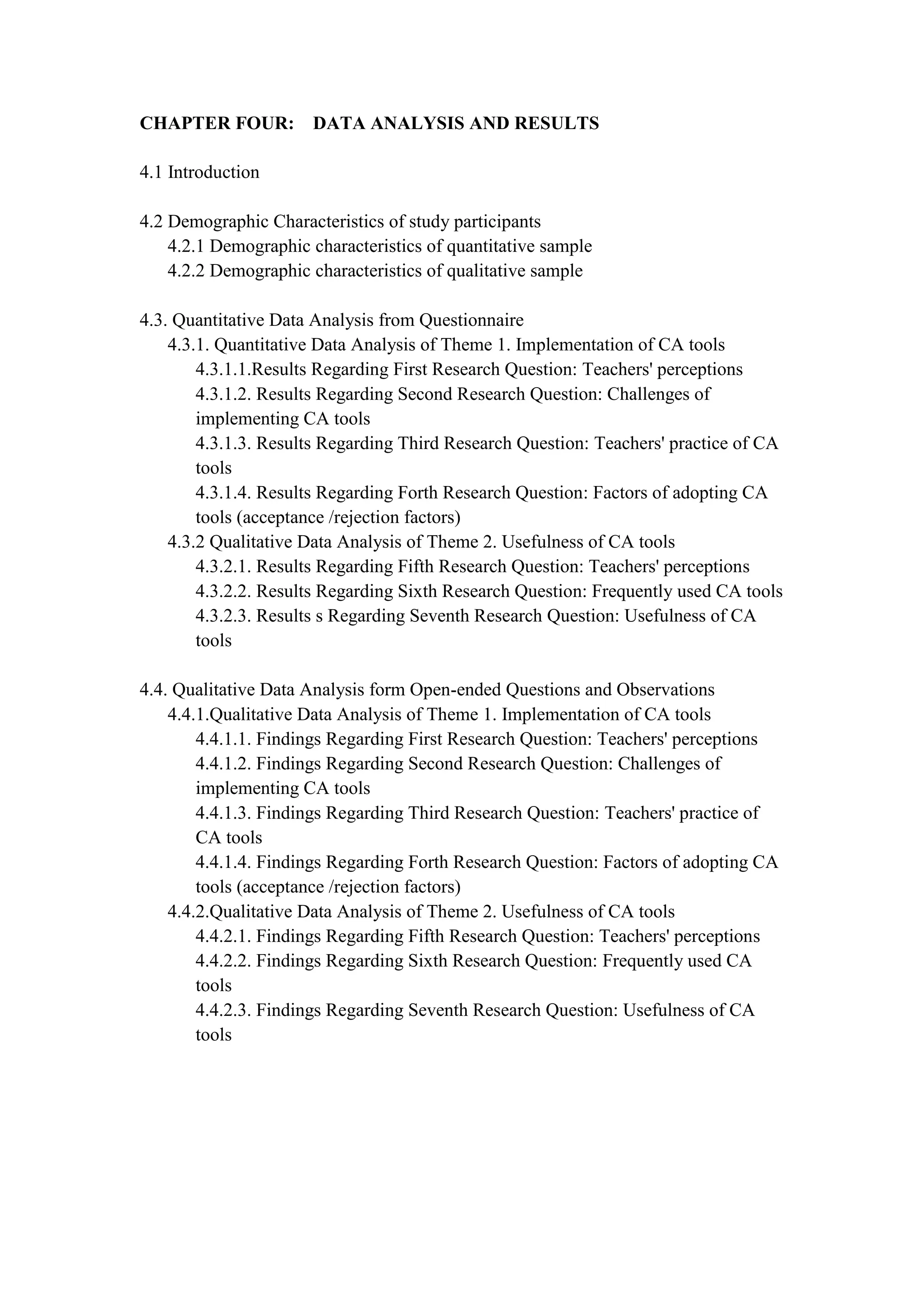This chapter presents an analysis of quantitative and qualitative data collected from 350 English teachers regarding their perceptions of implementing and the usefulness of classroom assessment tools. The data was analyzed using SPSS. Demographic characteristics of the participants are described, showing that the majority were female teachers with 5 or more years of experience teaching grades 11-12. Both quantitative and qualitative data analyses addressed teachers' perceptions, challenges, practices, and factors influencing adoption of assessment tools.

























































